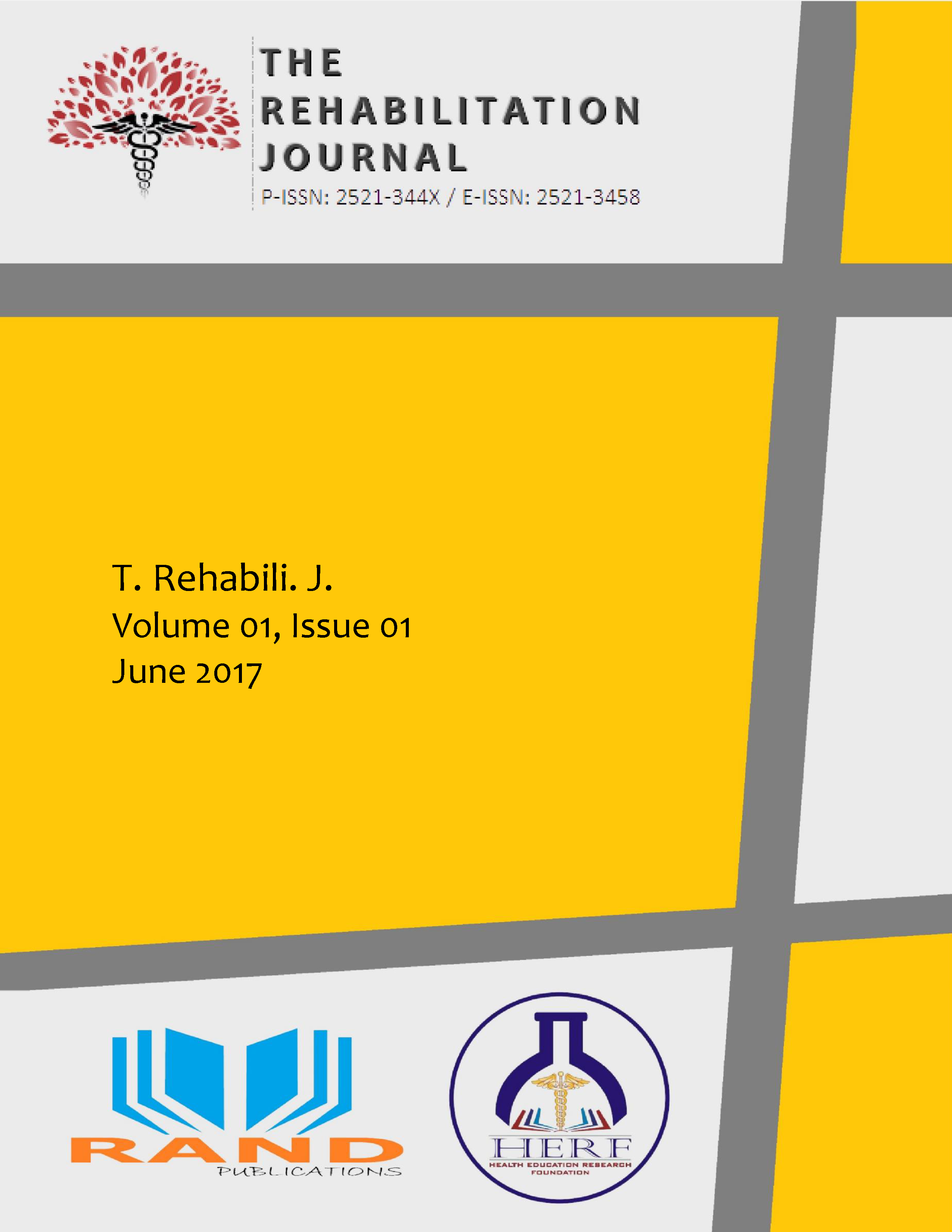EFFECTIVENESS OF GRADE I, II KALTENBORN MOBILIZATION IN STAGE I ADHESIVE CAPSULITIS
Soi: 21.2017/re-trj17vol01iss01p4
DOI:
https://doi.org/10.52567/trj.v1i01.45Abstract
Objectives: To determine the effectiveness of grade I and II Kaltenborn mobilization in treating stage I adhesive Capsulitis. Material & Methods: The study design was Randomized Controlled Trial. In which two groups were formed. One was Group A and second was Group B. In Group A for adhesive capsulitis stage I, Keltonborne mobilization Grade I&II was performed along with TENS, Hopsacks & Home Exercises Plan. In Group B TENS, Hot packs and Home Exercise Plan was introduced. The study was conducted in physiotherapy department BBH, Rawalpindi. The study was conducted for six months after the approval of topic by ASRC Isra University Islamabad. Sample size chosen was 60 patients and 30 patients were included in each group. Non probability Purposive Sampling technique was used collect the samples. The data was collected through the following questionnaires. The data collection also consisted of Quick DASH part-I with 11-items and Quick DASH work-module with 4 questions, which measured level of pain severity and level of difficulty. Data was analyzed through SPSS IBM 20. Baseline data was described in form of frequency table and bar charts, mean and standard deviation. Results: The result showed significant difference within and between the Group A and Group B after intervention. The result the p-value= ≤0.05 in quick DASH questionnaire. Conclusion: The results of the study concluded that Hot pack, TENS and home exercises with or with keltonborne grade 1&2 are both effective for management of symptoms of stage 1 adhesive capsulitis. But Hotpack, TENS and home exercise plan with keltonborne mobilization grade 1&2 significantly improve in term of treatment duration and symptoms reduction
Keywords: Adhesive capsulitis, Keltonborne manual mobilization, Quick DASH, TENS, Hot pack, Home exercise plan
Objectives: To determine the effectiveness of grade I and II Kaltenborn mobilization in treating stage I adhesive Capsulitis. Material & Methods: The study design was Randomized Controlled Trial. In which two groups were formed. One was Group A and second was Group B. In Group A for adhesive capsulitis stage I, Keltonborne mobilization Grade I&II was performed along with TENS, Hopsacks & Home Exercises Plan. In Group B TENS, Hot packs and Home Exercise Plan was introduced. The study was conducted in physiotherapy department BBH, Rawalpindi. The study was conducted for six months after the approval of topic by ASRC Isra University Islamabad. Sample size chosen was 60 patients and 30 patients were included in each group. Non probability Purposive Sampling technique was used collect the samples. The data was collected through the following questionnaires. The data collection also consisted of Quick DASH part-I with 11-items and Quick DASH work-module with 4 questions, which measured level of pain severity and level of difficulty. Data was analyzed through SPSS IBM 20. Baseline data was described in form of frequency table and bar charts, mean and standard deviation. Results: The result showed significant difference within and between the Group A and Group B after intervention. The result the p-value= ≤0.05 in quick DASH questionnaire. Conclusion: The results of the study concluded that Hot pack, TENS and home exercises with or with keltonborne grade 1&2 are both effective for management of symptoms of stage 1 adhesive capsulitis. But Hotpack, TENS and home exercise plan with keltonborne mobilization grade 1&2 significantly improve in term of treatment duration and symptoms reduction
Keywords: Adhesive capsulitis, Keltonborne manual mobilization, Quick DASH, TENS, Hot pack, Home exercise plan
Downloads
Published
Issue
Section
License
Copyright (c) 2017 Waqar Ahmed Awan, Anam Aftab, Rabnawaz Khan, Shafqatullah Abro

This work is licensed under a Creative Commons Attribution-NoDerivatives 4.0 International License.
Authors retain copyright and grant the journal right of first publication with the work simultaneously licensed under a Creative Commons Attribution (CC-BY) 4.0 License that allows others to share the work with an acknowledgment of the work’s authorship and initial publication in this journal.









